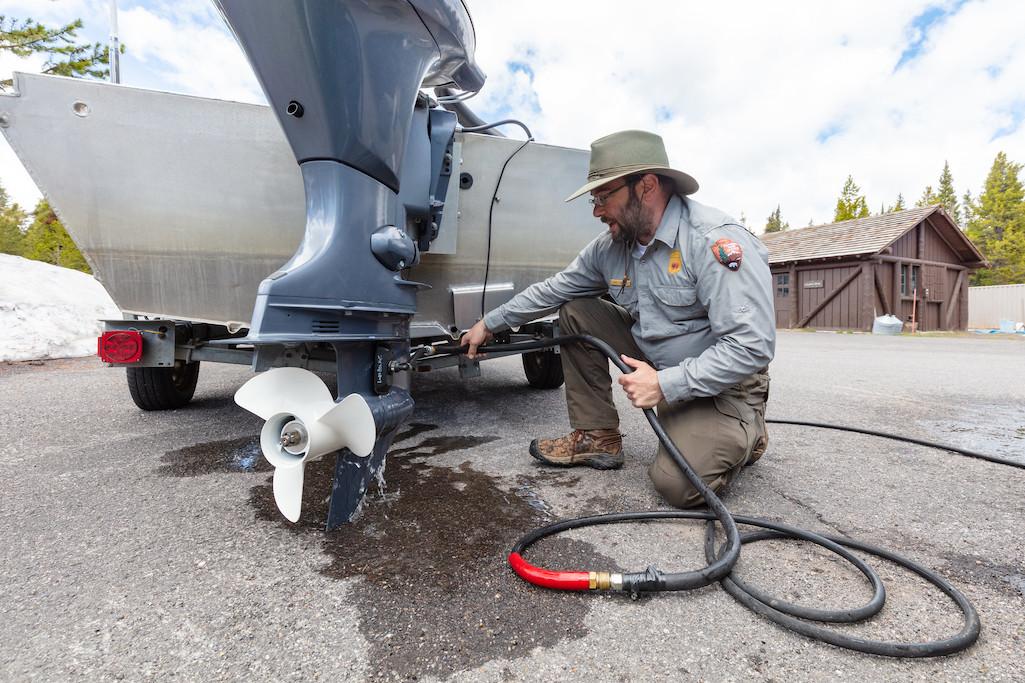
A routine inspection prevented a boat with invasive quagga mussels from entering Yellowstone Lake/NPS file
A boat carrying nonnative quagga mussels was prevented from entering Yellowstone Lake in Yellowstone National Park after an inspection spotted the mussels.
"They're doing a great job," Yellowstone Superintendent Cam Sholly said of the Aquatic Invasive Species inspectors stationed at the Grant Village boat launch. "Boating was up 10 percent last year. We're going to invest more (in the inspections). It's the main reason we increased the boating fees."
Quagga mussels are native to the Caspian, Black, and Azov seas in eastern Europe. It's thought they hitchhiked to North American in the ballast water of ocean-going ships. Arriving in the Great Lakes around 1986, the shellfish have continually expanded their habitat in the United States, first moving through the Great Lakes and Mississippi River Basin states before heading in all compass directions by catching rides on boats and trailers.
They turned up in Lake Mead National Recreation Area in 2007, and were spotted six years later at Lake Powell in Glen Canyon National Recreation Area.
Yellowstone Lake already has been invaded by a nonnative species, lake trout. They turned up in the lake in the 1990s, most likely through an illegal introduction. Efforts to greatly reduce the population of lake trout, which prey on the Yellowstone Lake's native cutthroat trout, cost the park millions of dollars.
The unidentified boat was found with some quagga mussels on June 17 during a routine inspection.
Park staff say the mussels are one of many aquatic invasive species that "pose a grave risk to the ecology, recreation and economy of the park and beyond."
"Preventing the release of AIS is critical because control and removal after they become established in a watershed is usually impossible and efforts to reduce their impact can be extremely expensive," a park release added.
To prevent the spread of AIS, all boats, kayaks, canoes, and float tubes are inspected before visitors can launch them in the water. Boats with ballast tanks are not permitted to launch within the park. Watercraft that arrive dirty or with standing water are subject to decontamination as some of these species are microscopic. Watercraft that cannot be properly decontaminated will be prohibited from launching.
It was not immediately clear how many quagga mussels were spotted on the boat at Grant Village, whether they were alive, or whether the boat's owner had previously had the boat decontaminated.
Some states in the Intermountain West require motorists hauling watercraft to stop at ports of entry to be checked for invasive species, including quagga mussels.
At Lake Powell, after boaters haul their craft out of the lake they are required to go through inspection and possible decontamination. They are then given documents showing when they left Lake Powell and that they were inspected. Boats found with quagga mussels either then go through decontamination, or their owners are told not to put them into another water body for at least 18 days.



Add comment